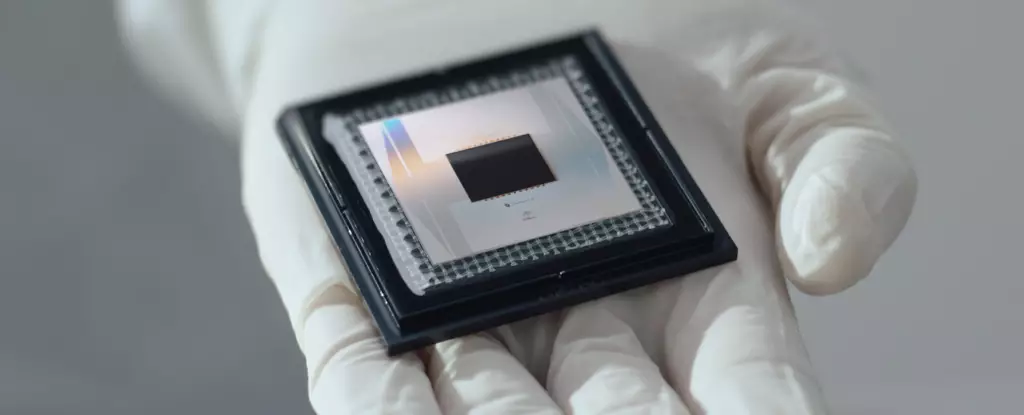Quantum computing stands at the frontier of technological innovation, offering the promise of unparalleled computational power. However, the journey toward fully functional quantum systems has been impeded by the fragility of qubits—quantum bits that can exist in multiple states simultaneously. Despite the promise that quantum computing holds, advancements in this technology have faced significant hurdles, particularly in error management. Google’s newest quantum chip, Willow, represents an important leap in overcoming these obstacles and enhancing the practicality of quantum computers.
At the core of quantum computing lies the qubit, which diverges from traditional binary bits by embodying the capability to exist as a 0, a 1, or both at once—a phenomenon referred to as superposition. This unique trait allows quantum computers to tackle intricate problems far beyond the capacity of classical systems. Yet, the delicate nature of qubits makes them susceptible to environmental interference, often leading to rapid errors that disrupt calculations. Traditional quantum computers may achieve an impressive reliability rate of 99.9%, but to be viable for widespread applications, it’s essential to reduce error rates to one in a trillion.
Historically, quantum error correction strategies have provided a framework to safeguard against these vulnerabilities. Researchers have explored various methods to distribute a logical qubit across numerous physical qubits, enabling them to counteract noise and decoherence. However, for this technique to be effective, the added qubits must correct errors more quickly than they introduce new ones. Enter Google’s Willow chip—a significant breakthrough in the unfolding narrative of quantum mechanics and error correction.
The Willow chip, introduced by Google engineers, features an impressive 105 physical qubits and introduces an innovative architecture that facilitates exponential error suppression. According to researchers Michael Newman and Kevin Satzinger from the Google Quantum AI team, Willow demonstrates that as the number of encoded qubits increases—from small 3×3 lattices to larger configurations—error rates decrease significantly, effectively halving with each increase in size. This exponential improvement is a major advancement that addresses a long-standing challenge in quantum computing.
Willow’s architecture, coupled with its sophisticated error-correcting algorithms, allows for better stability of logical qubits. This novel approach translates to a system where maintaining qubit integrity is increasingly feasible, suggesting a potential pathway to more extensive and reliable quantum computing infrastructures. Willow’s ability to sustain a logical qubit error rate approximately once an hour stands in stark contrast to previous systems, which faced failures every few seconds.
In addition to its remarkable stability, Willow showcases the potential to outperform classical supercomputers dramatically. Google claims that Willow can execute a particular quantum task in just five minutes—an operation that, if assigned to the fastest classical supercomputer, would require an inconceivable 10 septillion years. While the task is specifically designed for quantum systems, the contrast underscores the transformative capabilities anticipated from quantum technology moving forward.
Despite these promising advancements, researchers acknowledge that challenges remain in ensuring errors remain infrequent in practical applications. The path to achieving truly functional quantum computing will necessitate not only advancements in hardware but also the cultivation of more sophisticated algorithms that can efficiently harness the power of a larger number of qubits.
Although Google’s Willow chip represents a landmark achievement in quantum error correction and stability, the reality of quantum computing remains complex. As highlighted by Newman and Satzinger, there exists a significant gap between current error rates and the ambitious one-in-a-trillion target necessary for large-scale quantum applications. Bridging this gap will demand concerted efforts within the research community to leverage innovative technologies and overcome the intrinsic challenges that qubits present.
Google’s Willow chip signals a transformative chapter in the ongoing development of quantum computing. By enhancing error management techniques, it provides a clearer path toward practical uses of quantum technology. As researchers continue to refine quantum systems, the foundational work laid by Willow will be critical in unlocking the full potential of quantum computation, promising a future where these powerful machines could revolutionize numerous fields.


Leave a Reply